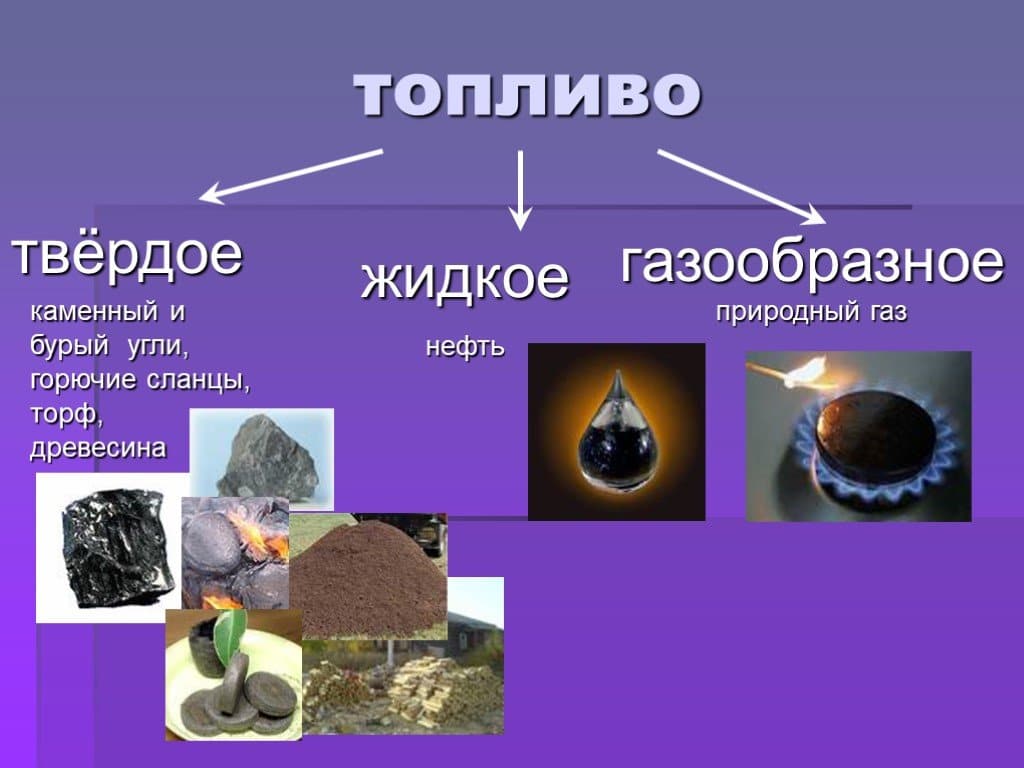
Types of liquid fuel
Liquid fuels are usually obtained from the refining of crude oil or (to a lesser extent) from hard coal and lignite. They are mainly used to drive internal combustion engines and, to a lesser extent, to start steam boilers, for heating and technological purposes.
The most important liquid fuels are: gasoline, diesel, fuel oil, kerosene, synthetic fuels.
Gas
A mixture of liquid hydrocarbons, one of the main types of fuel used in the engines of cars, aircraft and some other devices. Also used as a solvent. From a chemical point of view, the main components of gasoline are aliphatic hydrocarbons with the number of carbon atoms from 5 to 12. There are also traces of unsaturated and aromatic hydrocarbons.
Gasoline supplies energy to the engine through combustion, that is, with oxygen from the atmosphere. Since it burns out in very short cycles, this process must be as fast and uniform as possible throughout the entire volume of the engine's cylinders. This is achieved by mixing gasoline with air before it enters the cylinders, creating a so-called fuel-air mixture, i.e. a suspension (fog) of very small droplets of gasoline in the air. Gasoline is produced by distillation of crude oil. Its composition depends on the initial composition of the oil and rectification conditions. To improve the properties of gasoline as a fuel, small amounts (less than 1%) of selected chemical compounds are added to engines, called antiknock agents (preventing detonation, that is, uncontrolled and uneven combustion).
Diesel
The fuel is designed for compression ignition diesel engines. It is a mixture of paraffinic, naphthenic and aromatic hydrocarbons released from crude oil during the distillation process. Diesel distillates have a boiling point much higher (180-350°C) than gasoline distillates. Since they contain a lot of sulfur, it becomes necessary to remove it by hydrogen treatment (hydrotreating).
Diesel oils are also products obtained from fractions remaining after distillation, but for this it is necessary to carry out catalytic decomposition processes (catalytic cracking, hydrocracking). The composition and mutual ratios of hydrocarbons contained in diesel oils vary depending on the nature of the oil being processed and the technological processes used in their production.
Thanks to the method of ignition of the oil-air mixture in engines - sparkless, but temperature (self-ignition) - there is no problem of detonation combustion. Therefore, it makes no sense to indicate the octane number for oils. The key parameter for these fuels is the ability to rapidly self-ignite at high temperatures, the measure of which is the cetane number.
Oil, oil
The oily liquid remaining after the distillation of low-grade oil under atmospheric conditions at a temperature of 250-350°C. It consists of high molecular weight hydrocarbons. Due to its low price, it is used as fuel for low-speed marine reciprocating engines, marine steam boilers and for starting power steam boilers, fuel for steam boilers in some steam locomotives, fuel for industrial furnaces (for example, in the production of gypsum). ), feedstock for vacuum distillation, for the production of liquid lubricants (lubricating oils) and solid lubricants (such as petroleum jelly), and also as a cracking feedstock for the production of fuel oil and gasoline.
Oil
The liquid fraction of crude oil, boiling in the range of 170-250°C, has a density of 0,78-0,81 g/cm³. A yellowish flammable liquid with a characteristic odor, which is a mixture of hydrocarbons, the molecules of which contain 12-15 carbon atoms. It is used both (under the name "kerosene" or "aviation kerosene") as a solvent and for cosmetic purposes.
Synthetic fuel
A chemically synthesized fuel that can be an alternative to gasoline or diesel fuel. Depending on the raw materials used, the following technologies are distinguished:
- (GTL) - fuel from natural gas;
- (CTL) - from carbon;
- (BTL) - from biomass.
So far, the first two technologies are the most developed. Coal-based synthetic gasoline was used during World War II and is now widely used in South Africa. The production of synthetic fuels based on biomass is still at an experimental stage, but can gain more popularity due to the promotion of solutions that are good for the environment (biofuels are moving forward in the fight against global warming). The main type of synthesis used in the production of synthetic fuels is the Fischer-Tropsch synthesis.
